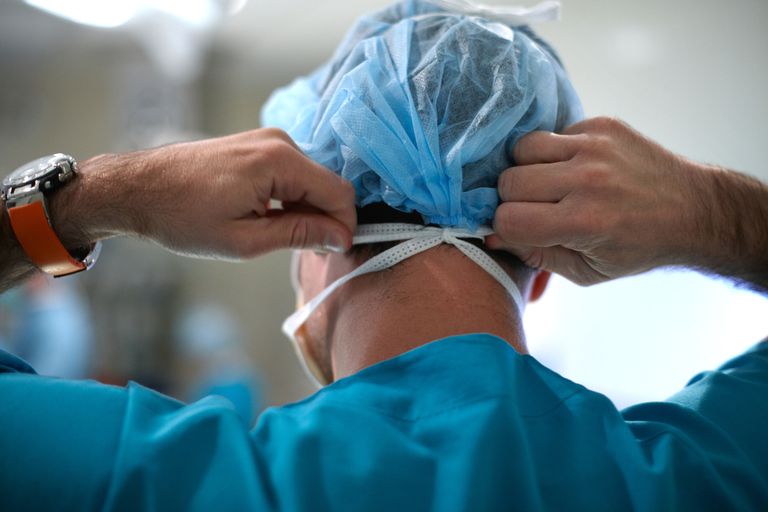Risk Taker
 There has hardly been any person who has got his medullas removed because they acted like tumors and there have been only 32 such cases of ‘bilateral adrenal medullary hyperplasia’. There has been no book or surgery that has been invented for the disorder that Doug was suffering from, so he made up his mind to invent surgery for himself.
There has hardly been any person who has got his medullas removed because they acted like tumors and there have been only 32 such cases of ‘bilateral adrenal medullary hyperplasia’. There has been no book or surgery that has been invented for the disorder that Doug was suffering from, so he made up his mind to invent surgery for himself.
Stronger
 After reaching in the depths of his disease, Doug made up his mind, “If there isn’t a surgery, I’m going to make one.” He showed strength like no other patient suffering from a disease like his. “Very few people understand and think about their illness with the level of resolution that Doug thinks about his” added David Robertson, a neurologist, and professor of medicine at Vanderbilt University.
After reaching in the depths of his disease, Doug made up his mind, “If there isn’t a surgery, I’m going to make one.” He showed strength like no other patient suffering from a disease like his. “Very few people understand and think about their illness with the level of resolution that Doug thinks about his” added David Robertson, a neurologist, and professor of medicine at Vanderbilt University.
2008
 Doug was finally coming closer to his destination of finding a surgery for his ailment. In 2008, while going through medical books, he found a study from a scientist that had summed up a procedure that Doug found helpful, described as follows: “You slice the rat’s adrenal gland with a razor blade and squeeze it so the medulla pops out like a pimple.”
Doug was finally coming closer to his destination of finding a surgery for his ailment. In 2008, while going through medical books, he found a study from a scientist that had summed up a procedure that Doug found helpful, described as follows: “You slice the rat’s adrenal gland with a razor blade and squeeze it so the medulla pops out like a pimple.”
Another Task
 Doug had a solution, the surgery. He had worked extensively to reach to this conclusion and the next big step now was to find a doctor who would be ready to undertake the risk of conducting a surgery that was never before conducted on humans but only in rats.
Doug had a solution, the surgery. He had worked extensively to reach to this conclusion and the next big step now was to find a doctor who would be ready to undertake the risk of conducting a surgery that was never before conducted on humans but only in rats.
Lucky Year
 In the beautiful month of September 2010, Doug had his first surgery and successfully got his adrenal medullas removed after which Lindsay was able to easily sit up straight for three hours and walk up at least a mile. He underwent a second surgery in 2010 and by 2014 he had almost all his medullas removed. But this was far from the end of Doug’s journey.
In the beautiful month of September 2010, Doug had his first surgery and successfully got his adrenal medullas removed after which Lindsay was able to easily sit up straight for three hours and walk up at least a mile. He underwent a second surgery in 2010 and by 2014 he had almost all his medullas removed. But this was far from the end of Doug’s journey.
Lacking Information
 The rare case of Doug has still not reached a stage where researchers could know fully about it. There is nothing known about it by the medical community. Neither its reason of existence nor the perfect cure for it. The community has still not come very far from the fact that the disease is called ‘bilateral adrenal medullary hyperplasia’.
The rare case of Doug has still not reached a stage where researchers could know fully about it. There is nothing known about it by the medical community. Neither its reason of existence nor the perfect cure for it. The community has still not come very far from the fact that the disease is called ‘bilateral adrenal medullary hyperplasia’.
